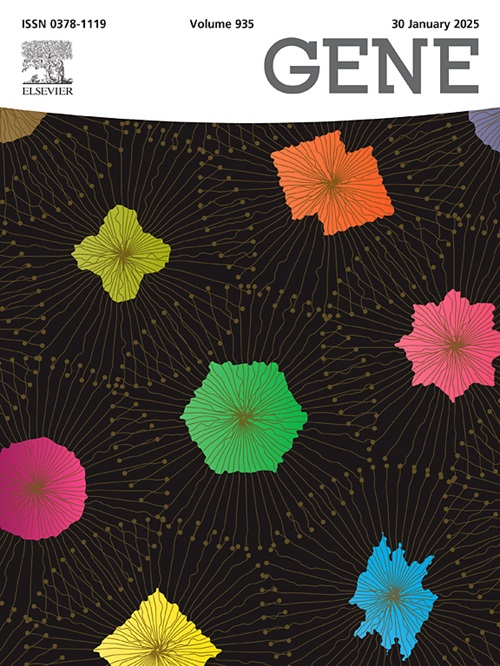RNA-seq reveals the critical role of the Glaesserella parasuis hfq gene in stress response and virulence
IF 2.4
3区 生物学
Q2 GENETICS & HEREDITY
引用次数: 0
Abstract
Hfq protein is widely present in most bacteria and participates in regulating the expression of bacterial virulence factors in various gram-negative bacteria. Mutations in the hfq gene lead to decreased bacterial virulence in Glaesserella parasuis. However, the molecular mechanism between Hfq protein and bacterial virulence remains unknown. In this study, an hfq gene in-frame deletion mutant strain was constructed through the natural transformation method, the differences in bacterial biological characteristics between mutant and parent strains were compared, and the changes in bacterial transcriptome caused by hfq gene mutations were determined through RNA-seq. The results revealed that the hfq gene mutation did not alter the bacterial growth rate or morphology. However, the Δhfq mutant exhibited significantly reduced survival under stress conditions, including 42 °C heat shock, 100 mM H2O2, 8 mM HCl, and iron-deficient environments, compared with the parent strain. Moreover, the mutation led to attenuated bacterial virulence in the mouse infection model. RNA-seq results revealed that the different expressed genes are involved in the stress response, iron ion metabolism, and transcriptional regulation, and some potential virulence factors, such as sodA and rpoC in Glaesserella parasuis were downregulated. Overall, these findings provide preliminary insights into the molecular mechanism between Hfq protein, stress response, and bacterial virulence.
RNA-seq揭示了副猪绿脓杆菌hfq基因在应激反应和毒力中的关键作用。
Hfq蛋白广泛存在于大多数细菌中,在多种革兰氏阴性菌中参与调节细菌毒力因子的表达。hfq基因突变导致副猪绿脓杆菌毒力下降。然而,Hfq蛋白与细菌毒力之间的分子机制尚不清楚。本研究通过自然转化法构建hfq基因框内缺失突变株,比较突变株与亲本菌株之间细菌生物学特性的差异,并通过RNA-seq测定hfq基因突变引起的细菌转录组变化。结果表明,hfq基因突变没有改变细菌的生长速度和形态。然而,与亲本相比,Δhfq突变体在胁迫条件下(包括42 °C热休克、10 mM H2O2、8 mM HCl和缺铁环境)的存活率显著降低。此外,在小鼠感染模型中,该突变导致细菌毒力减弱。RNA-seq结果显示,不同表达的基因参与了应激反应、铁离子代谢和转录调控,副猪小绿杆菌的sodA和rpoC等潜在毒力因子下调。总的来说,这些发现为Hfq蛋白、应激反应和细菌毒力之间的分子机制提供了初步的见解。
本文章由计算机程序翻译,如有差异,请以英文原文为准。
求助全文
约1分钟内获得全文
求助全文
来源期刊

Gene
生物-遗传学
CiteScore
6.10
自引率
2.90%
发文量
718
审稿时长
42 days
期刊介绍:
Gene publishes papers that focus on the regulation, expression, function and evolution of genes in all biological contexts, including all prokaryotic and eukaryotic organisms, as well as viruses.
 求助内容:
求助内容: 应助结果提醒方式:
应助结果提醒方式:


